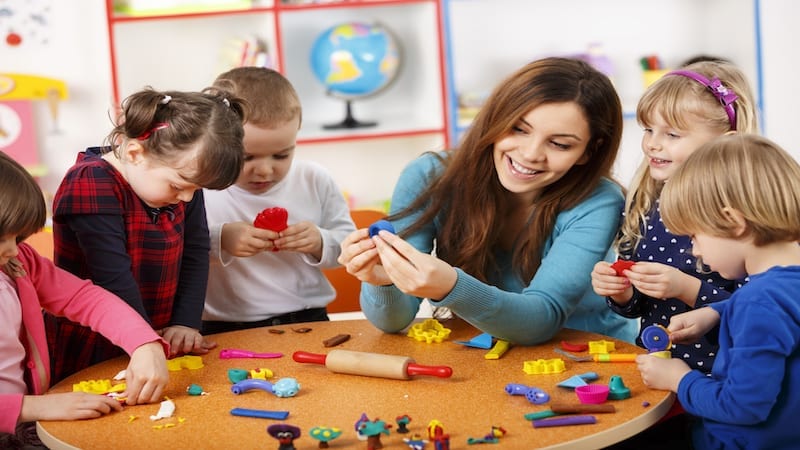Every Friday my toddler spends the morning at an ECE program and, as excited as I am to watch him play and grow, I am equally excited to observe how he and his classmates approach learning. It makes me think about the many school culture lessons I could take from his ECE program and bring to Manual High School in Denver, Colorado, where I serve as dean of student culture.
1. School is Joyful
Everyone is happy to be at school—the teacher, the parents, and, especially, the kids. It’s as if everyone in the room cannot wait to see one another. The tone of the entire three hours is positive, energetic, and consistently joyful. There isn’t an undertone of cynicism or a case of the Fridays. It’s simply a joyful and rich experience from when we say hello to when we walk out the door—I think the animal crackers help.
2. Collaboration is Never Forced
When those classic yellow Playdough canisters come out, kids congregate at the table. My son can’t help but elbow his way in and begin working with this stuff. There is no mention of homogenous or heterogeneous groupings or contrived turn-and-talks; kids interact because they are engaged. They feed off the energy of one another.
3. Teacher as Facilitator
There is no teacher talk. There are no instructions and no organized time for the teacher to fill the minds of these young students. The teacher simply creates experiences for kids and then confers with them, celebrates with them, and cares for them. She prepares the next experience before they are bored, not after. She proactively works to engage kids. While the kids are engaged, she is conferencing with parents and considering what next steps her students need. If every teacher altered the term “lesson planning” to “experience planning,” it might completely change the flow of how we approach a classroom.
4. Parents are Part of the Experience
The impact of parents in the educational experience of their children can not be understated. In ECE they walk side-by-side with their kids. While I’m of course not advocating for parents to fill the desks next to their high school students—though I think parents should be in classrooms much more than they are—I am suggesting that parents are the most underutilized piece of this complex educational puzzle. The ECE parents were encouraging, interacting, sharing, apologizing, and supporting the teacher and other parents. The ECE environment is not the same without the parents.
5. Rich, Deep, and Complex Texts
My son’s classroom is filled with books that range from picture books to chapter books. His classroom is only used for ECE, but there are texts far out of the range of development for the kids. Still, the students explore and have teachers help them read words and discuss images. In addition to the text-rich environment, there are tasks and activities at different levels that invite kids to push themselves to use or return to for comfort. There are toys and activities that are too difficult for my son, but he pursues them anyway. When he becomes tired or frustrated, he returns to something more appropriate—but that challenge is available at all times.
It is a remarkable experience to watch my son grow and learn in this environment. He is tired and content when he leaves. We should all pursue an environment so engaging and rich that kids leave tired and content. These five school culture lessons will return to school with me on Monday as I work with kids far older but no less in need of rich and engaging experiences.
Join our Facebook group Principal Life for more ideas on how to transform your school community.
